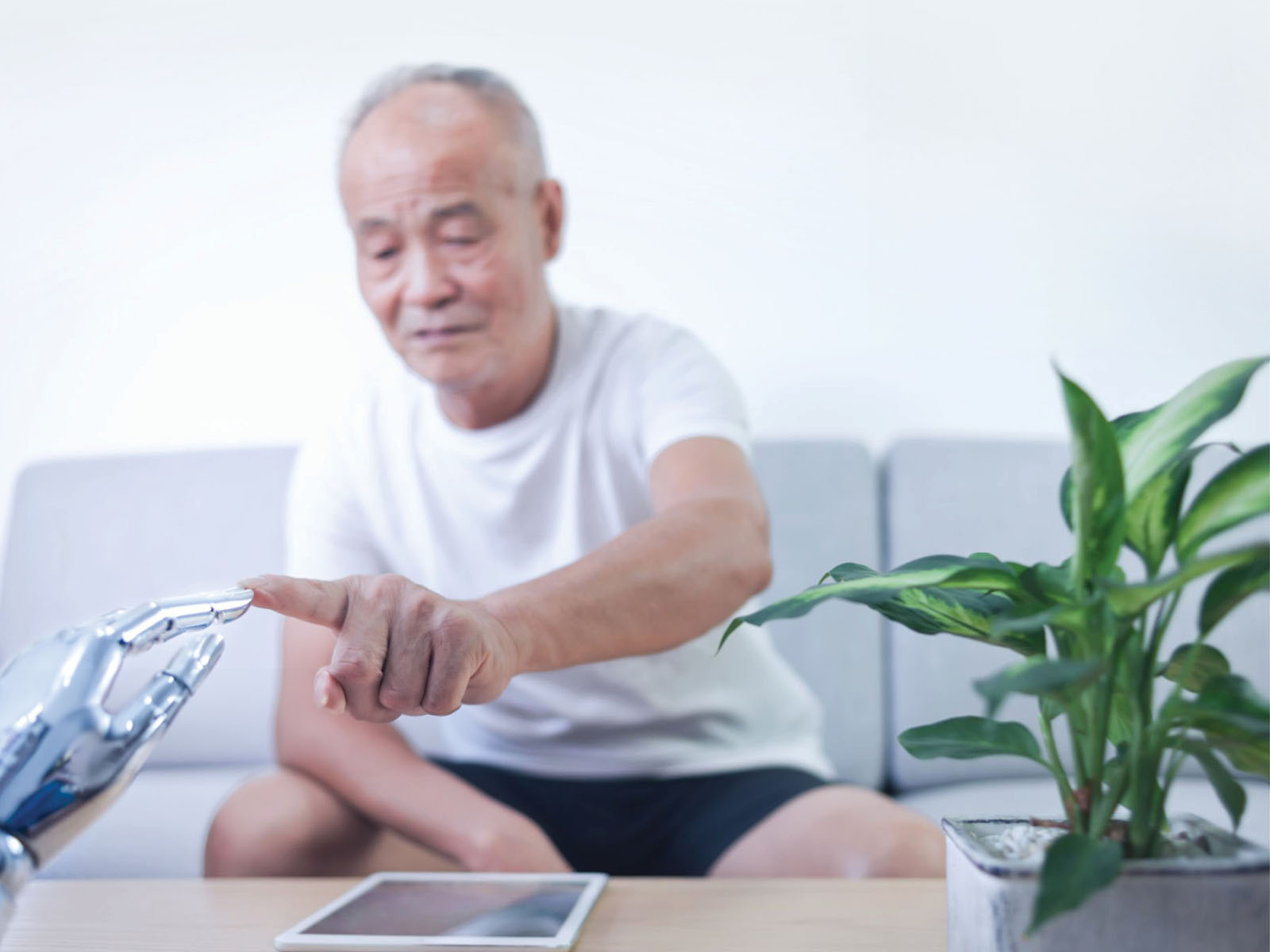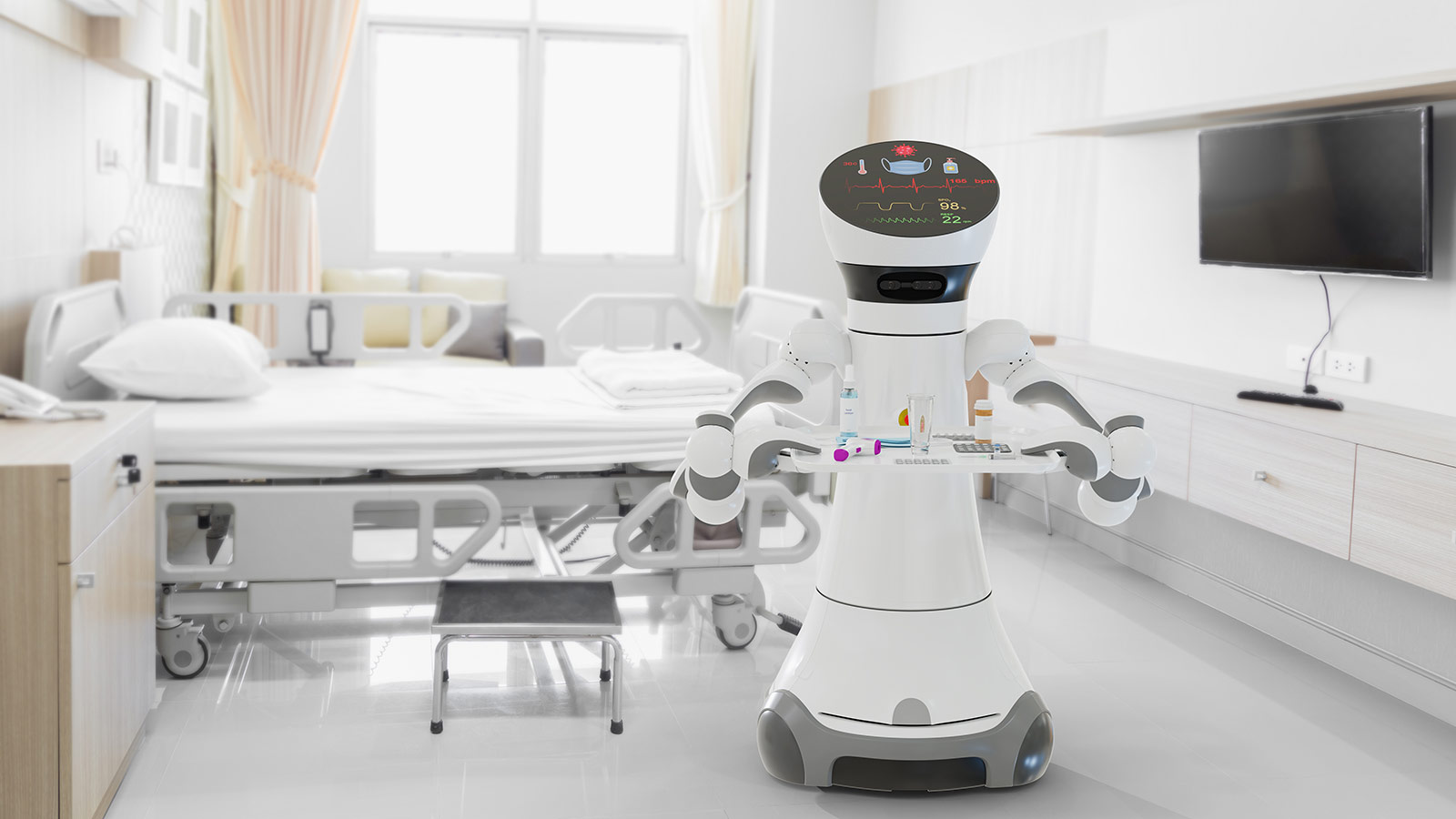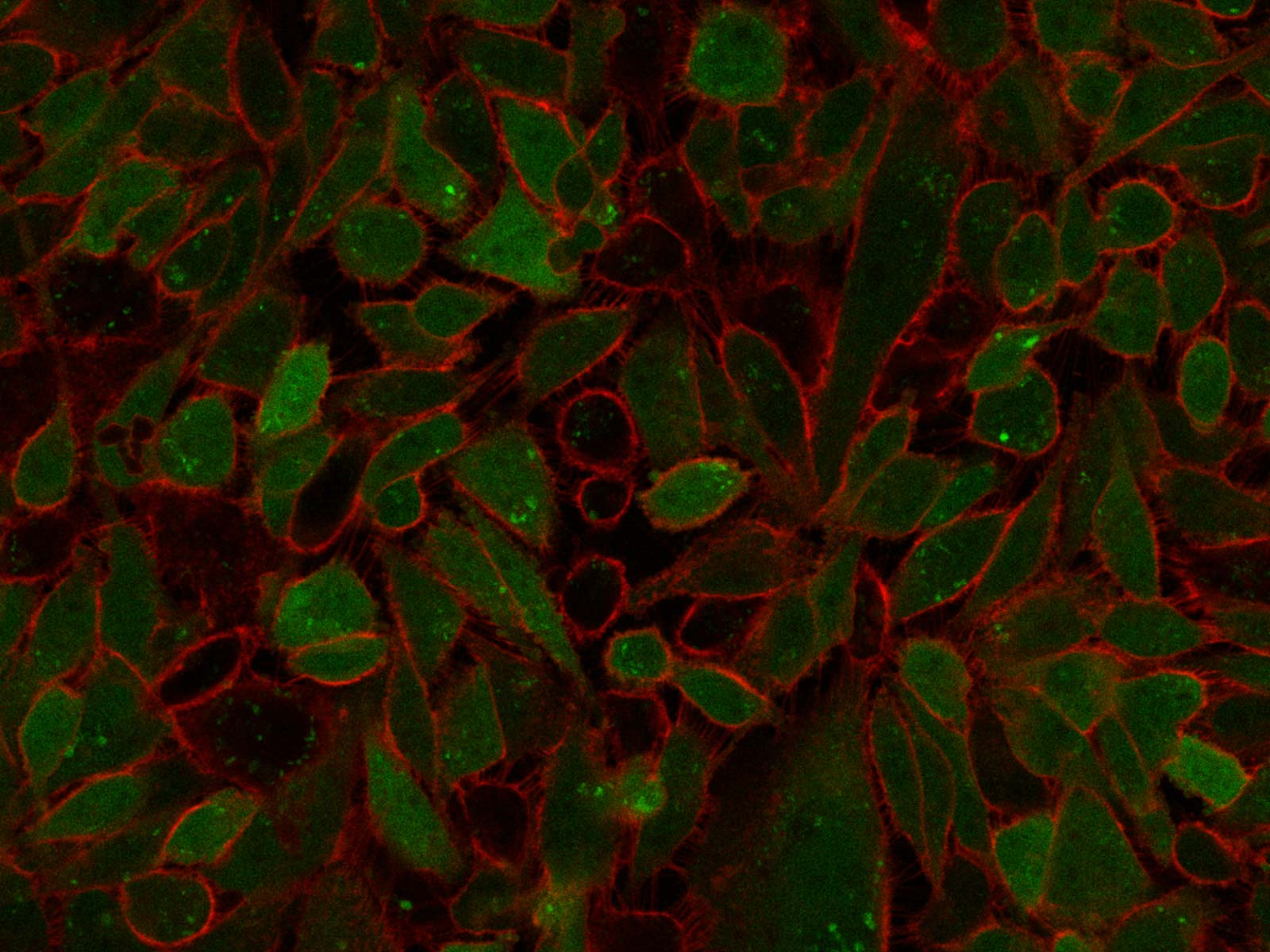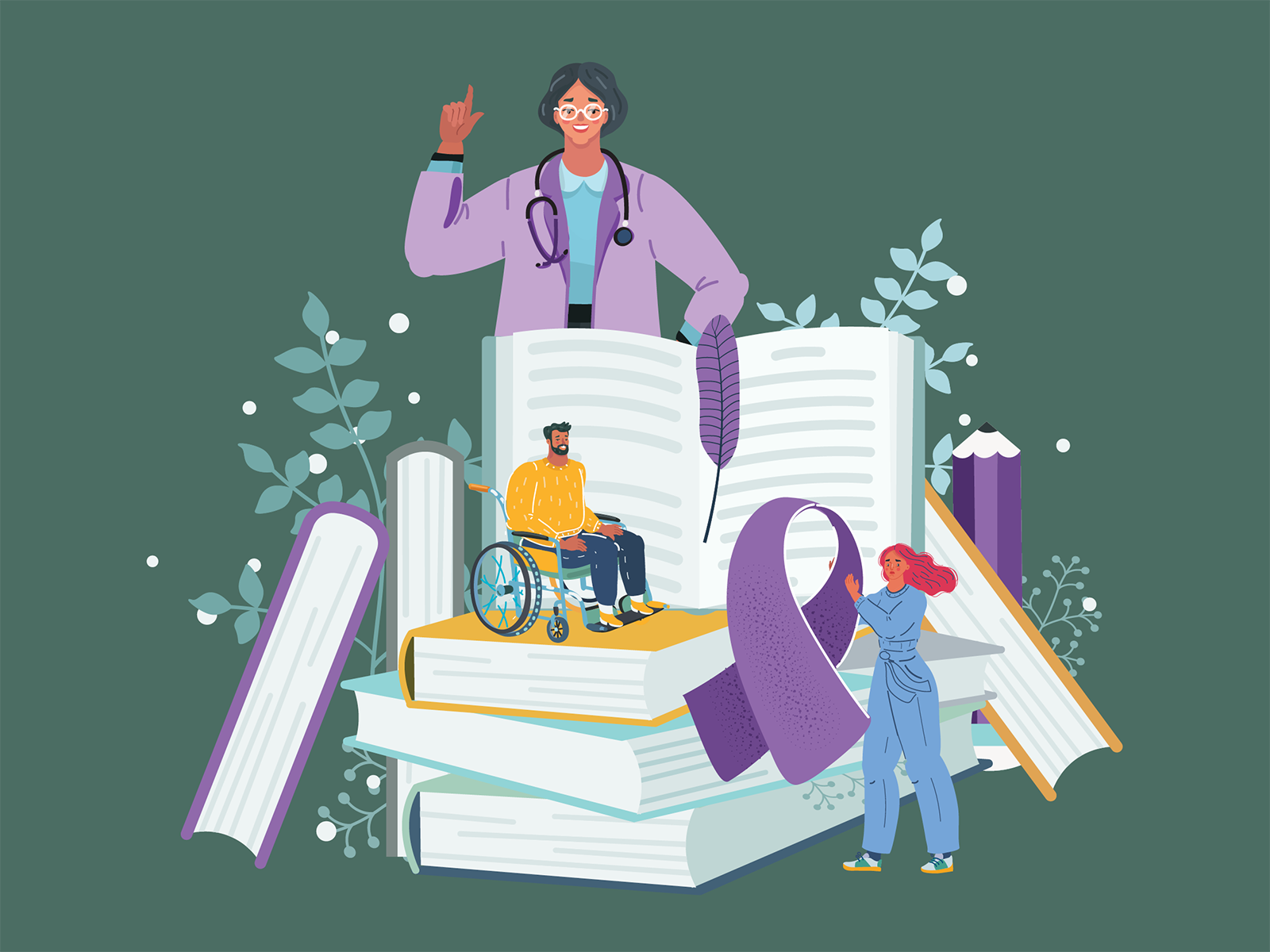
Issue 50
May 2024
ETHICALLY SPEAKING
By Dr Kathryn Muyskens, Research Fellow, Centre for Biomedical Ethics, Yong Loo Lin School of Medicine, National University of Singapore

The twin trends of increased longevity and shrinking families have combined to create a crisis in eldercare. Are care robots the answer to this problem?
Imagine this: You are in old age, your eyesight is poor, and you struggle to get out of bed in the morning. The floor didn’t feel so far away before; but no worry, you’ve got a nursing robot to help lift you out of bed and make sure you don’t fall.
Now it’s time for breakfast, what will you have? It’s an effort to decide all the time, so you say to your robot chef, “Surprise me”. You know it will be good. It knows what you like.
Now it’s time for the news. You read a few articles, and it stirs up some emotions in you, some memories about the old days. Ordinarily, you would have talked it over with your wife, but she passed away last year. You think of calling your son, but he’s been so busy lately. So, who can you talk to? Luckily, you’ve got a robot for that too.
Now imagine another scenario: You are in your mid-40s. You’re working towards a promotion at your job, or maybe trying very hard not to get fired. After work you rush to pick the children up from student care and shuffle them to their tuition class.
When class is over, you rush everyone to your mother’s place for dinner. You bring your mother food because she can’t cook anymore, but she complains it isn’t how she likes it.
You ask if she’s been keeping up with the exercises that the doctor told her to do for her knee. She says she forgot. You ask the helper why she didn’t remind her to do them, but the helper shrugs and says, “She’s too stubborn, I can’t make her do anything.” You throw up your hands in frustration, there’s just too much to juggle.
You go home. Your mother calls later, wanting to talk. But you’re too tired.
Which of these stories was more unsettling?
The problem with long lives and smaller families
Thanks to modern medicine, people are living longer than ever before. At the same time, the size of the average family is shrinking. This is especially true in Singapore and elsewhere in Asia. The twin trends have combined to create what is known as a “care deficit” for elders, while placing more pressure on the younger generations.
The family has traditionally been the first line of care for people as they age. But with fewer children in each generation, the weight of care is felt more intensely by each potential caregiver.
No matter how much you love your family members, caregiving is stressful work. Bad temper or stubbornness in the elderly can be exacerbated by common age-related problems such as chronic pain or cognitive decline.
For the younger cohort, caregiving duties are just one more stressful thing to juggle and this can place tension on even the healthiest parent-child relationship.
Is there a better solution? Maybe. New advancements in robotics and artificial intelligence (AI) have begun to develop a wide range of technological fixes to these challenges.
Robots can already be made to help with many of the more laborious aspects of eldercare—helping a person get out of a chair or bed, prepare meals, dispense medication, or use the bathroom. Some are already in use in certain Singapore hospitals1.
But it’s the advances in AI in particular that are worth noting. With the improvements in machine learning and the possibilities created by large language models, care robots (or ‘carebots’) could soon offer emotional and physical support for a person’s needs.
Real human relationships are often messy, like the mother and daughter in the second story. In Singapore’s context in particular, where family values and filial piety are prized, outsourcing care (even when care is stressful) to a machine may be uncomfortable for some. Ultimately, carebots could be a welcome addition to the eldercare toolkit. Yet, this technology has consequences for families and society as a whole that demand our consideration.”

The care deficit
Certainly, the care deficit needs filling, and the present options (care by family, hired help, or an institution) all have their own significant drawbacks, both ethically and practically. Carebot technology could make a meaningful difference, while avoiding some of the current problems. After all, carebots do not need sleep, do not get tired, do not get cranky, do not disobey, and do not take offense.
They sound perfect, and indeed, that’s how they have been marketed in places like Japan. Even so, the robot caregivers haven’t been the resounding success that was expected. This may be because of the limited kinds of interactions a programmed companion like Paro the robotic seal can offer. But technology keeps improving and it is becoming more and more human-like in expression.
Even so, there are some drawbacks. While AI can allow a carebot to mimic human speech or text in a convincing way, it is still not capable of forming a real human connection. It can perform care, but it cannot actually care.
But if you can’t tell the difference, does it matter? Ethicists would say, yes. Answering the question as to whether a technology is good or not is not only about whether it meets a need or entertains us. We also need to consider how technology changes society, and what the opportunity costs of its use may be. Importantly, we are not always better off getting what we want.
One day, the technology may be good enough to seem indistinguishable from real human interaction. Even more interestingly, future AI carebots could be programmed around the unique preferences of each elderly person, meaning they may feel like better companions than real humans.
Can carebots make better companions than humans?
Think back to the opening scenario, where the elderly person decided to talk to the carebot rather than call their son. This would be an example of a “parasocial” relationship. Though it mimics a real interpersonal connection, it is in fact just a one-way conversation. Parasocial relationships are common, celebrity fandom being one example. This kind of dynamic is however also known to worsen loneliness in the long term.
While many extol the potential of technology to fill the care deficit, this risk of eroding or replacing real human connection with its mere simulation should concern us.
Real human relationships are often messy, like the mother and daughter in the second story. In Singapore’s context in particular, where family values and filial piety are prized, outsourcing care (even when care is stressful) to a machine may be uncomfortable for some.
Ultimately, carebots could be a welcome addition to the eldercare toolkit. Yet, this technology has consequences for families and society as a whole that demand our consideration.
Given the economic and demographic pressures, robotic eldercare may be in our future whether we like it or not. Yet, the question of whether carebots move us closer to a technological utopia or not depends on exactly how we design and use them, and which roles we allow them to fill. The good news is, we as humans get to draw that line.
https://www.channelnewsasia.com/singapore/nursing-home-innovation-technology-nurses-better-care-senior-silver-economy-3729661.
More from this issue
PEOPLE OF NUS MEDICINE
The Kindest Cut

SCIENCE OF LIFE
Self-sacrificing Cancer Cells


